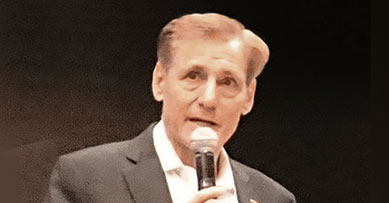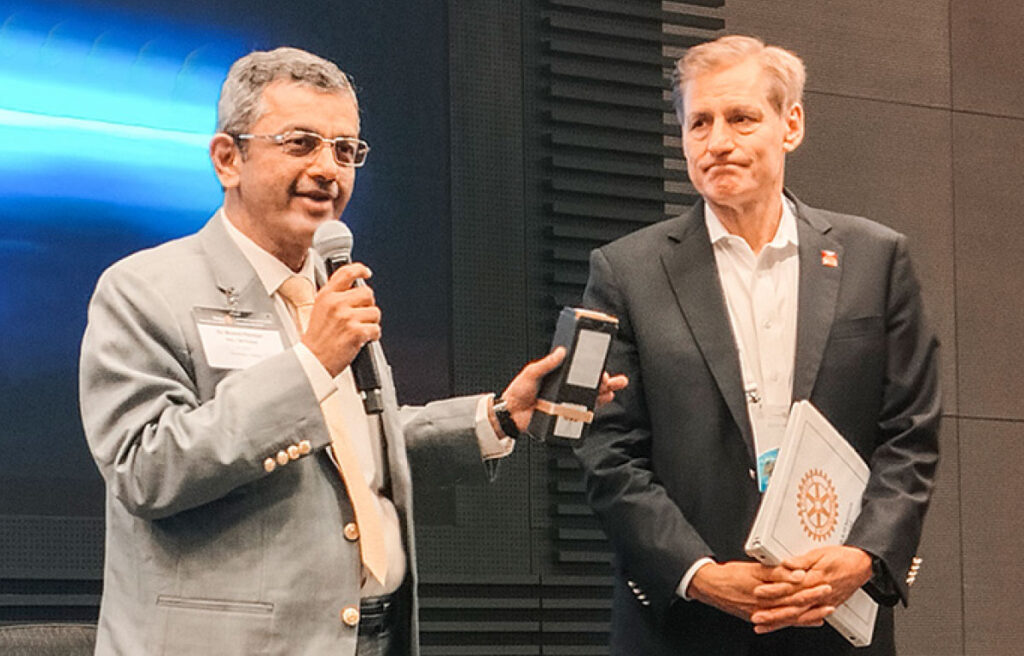
At the GETS/GNTS in Abu Dhabi, RI general secretary John Hewko presented a realistic picture of Rotary in the next 10 years. “Six critical issues need to be addressed if Rotary has to be strong in the next 5, 10 or 20 years,” he said, elaborating on the challenges ahead.
Membership
“Our membership has been hovering around 1.2 million over the past 20 years. If we have been able to maintain it at that level, it is thanks to this region. We are seeing significant growth in Asia, Africa, Far East and Eastern Europe. But in the US, UK, Canada and New Zealand, we have a membership crisis,” he said. For the first time in Rotary’s history membership in the US and Canada has fallen by 30 per cent of the worldwide total. “If the current trends continue, in 10 years North America will have 15 per cent and Asia will have 50 per cent Rotarians. The fact that Asia is growing is fantastic. But we need to grow Rotary everywhere. Last year we saw 150,000 people join Rotary but also saw a 150,000 people leaving Rotary.”
The key to growing Rotary membership and retaining it is to offer an innovative club experience. “When you join a club, you pay for the Rotary experience with your time and money. In many cases people realise that the experience is not what they had anticipated. So we must improve the product that we offer, in this case the club experience, or offer new products to make them more attractive to people.”
Flexibility
Urging the district leaders to encourage flexibility in clubs, he said, “What worked yesterday and today will not work tomorrow as the world continues to rapidly change. But the things that will never change are our 4-Way Test, our focus on ethics, fellowship and doing good in the world.” This is the core essence of being a Rotarian and the key to Rotary DNA. “But meeting frequency, in my view, is not a value. Ringing a bell or, singing a song, may no longer be relevant to people who want to join Rotary. Those are simply vessels with which we deliver our values. You as future leaders have the opportunity to fashion and charter club models to suit your community. There is no Rotary police. It is important to create clubs that are growing, vibrant and making a difference,” he said.
Check stagnation
Citing Kodak’s fall, Hewko said, “The iconic brand eventually became bankrupt because it failed to grow and adapt to the digital era. We are not in the business of formal meetings or memorising the manual of procedures or strictly adhering to rules. Rather, we are in the business of bringing people together, changing the world, growing as individuals, and basically having fun. That is the business model that we have to create to make it work.”
He urged Rotarians to be nimble enough to adapt to the dynamic changing times.

Continuity
Rotary’s strength is in “bringing new blood and ideas to the table every year. Our international president, a section of our directors and trustees change every year. But this has one drawback. It does not foster continuity. It is not about my year, my club, my governors, or my achievement.” RI has devised the Strategic Plan, and as new leaders come in each year, they should simply carry on from where the previous batch of leaders left matters. “It is going to be absolutely critical to achieve this strategic continuity at the club, district, zone and international level,” he added.
What next
To stay relevant, it is important that Rotary identifies its next global project. “Yes, polio eradication will be our top priority until we cross the finish line. But we need to have another global project because polio put us on the international stage as equals at the table with the CDC, WHO, UNICEF and the Gates Foundation. The question is which one and how are we going to get there, because we do so many things so well,” he said.
Regionalisation
Rotary is evolving in different ways in different regions. Rotary in Australia need not be the same as in India. “We need to realise that regionalisation is here to stay as it enhances its appeal to local Rotarians, and helps in growing our membership,” he said.
On a positive note, Hewko added, “We have been doing a lot of things right to keep Rotary vibrant in the last 117 years, but the things that didn’t do well may be a 1,000 to 1. We need to be open to the challenges that we face at a global level. Your work is going to play a huge role in how we are going to navigate the crossroads.”
He assured the DGEs and DGNs saying, “if we improve our flexibility, adopt our action plan, grow Rotary with new and innovative clubs, take a long, hard look in the mirror and not get defensive about the challenges, or nostalgic about how Rotary used to be, we will achieve our dreams. Our organisation is a great gift to humanity and we cannot let that gift wither and die. The future of Rotary is very, very bright and with your leadership our Rotary organisation will get past the bumps on the road, continue to fulfil its destiny and will continue to make new, greater difference and good to people around the world.”
Earlier during his address, the general secretary complimented Rotarians for their performance in weathering the Covid crisis. “We adapted to the new normal and came through the crisis with flying colours. There was a concern that there will be a significant drop in membership because we were working virtually and countries were facing severe economic issues. But membership actually increased slightly. South Asia showed remarkable stability in membership,” he said.
Giving an update on Rotary’s financial position, he said that the reserves of RI and TRF remain “very high and in excellent shape even if another crisis were to come.”
TRF trustee Bharat Pandya chaired the session.
Pictures by Jaishree





